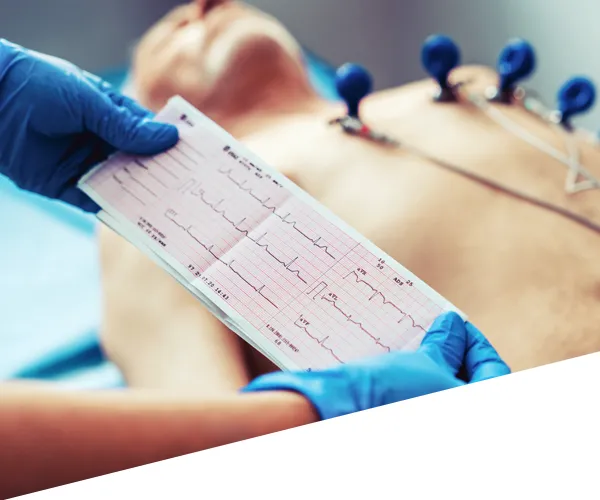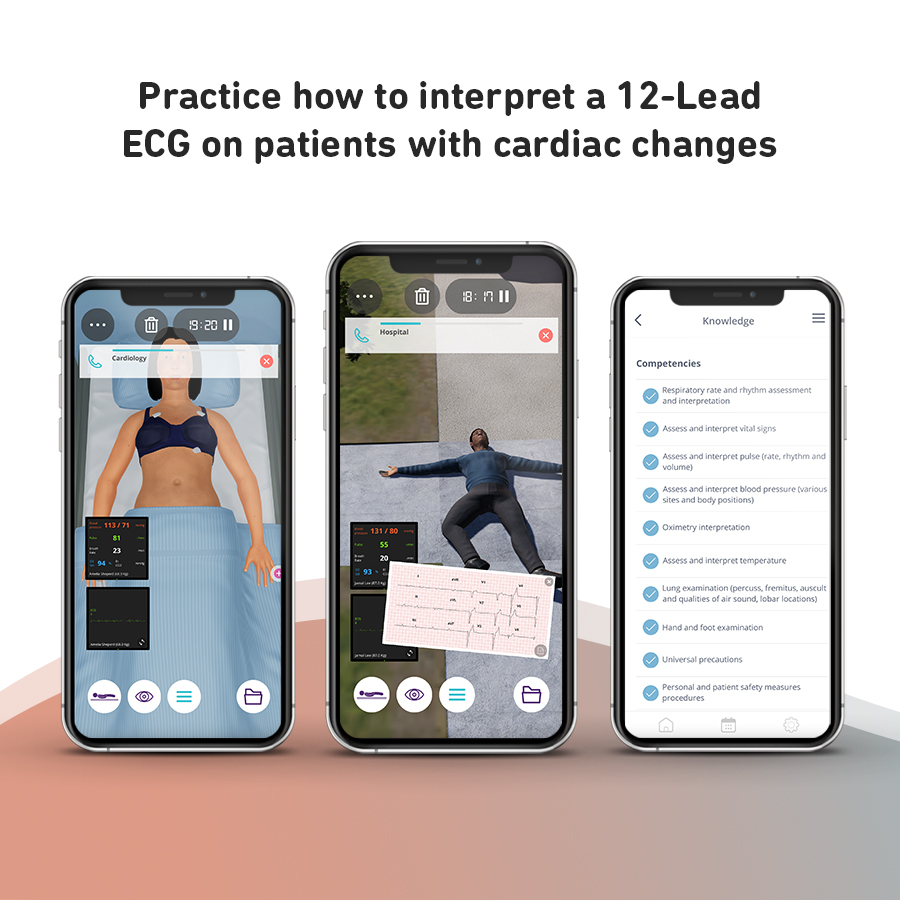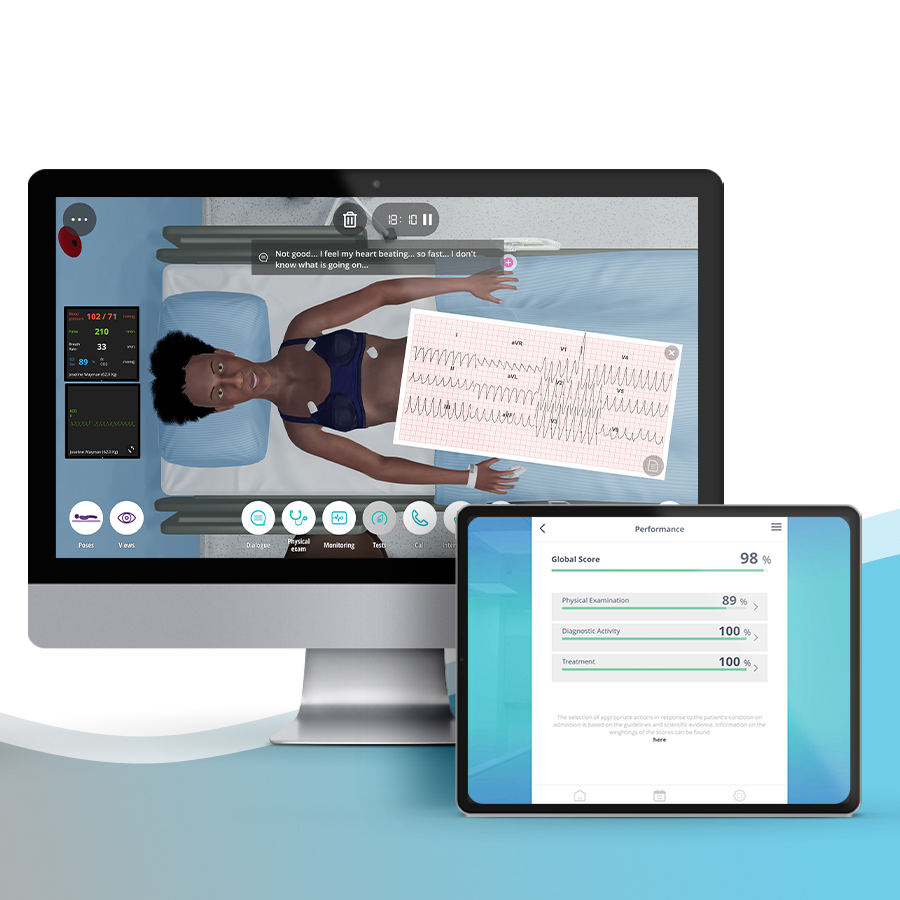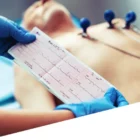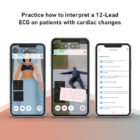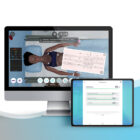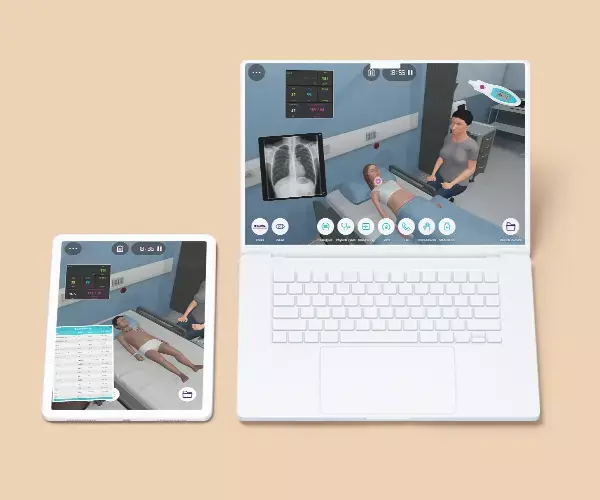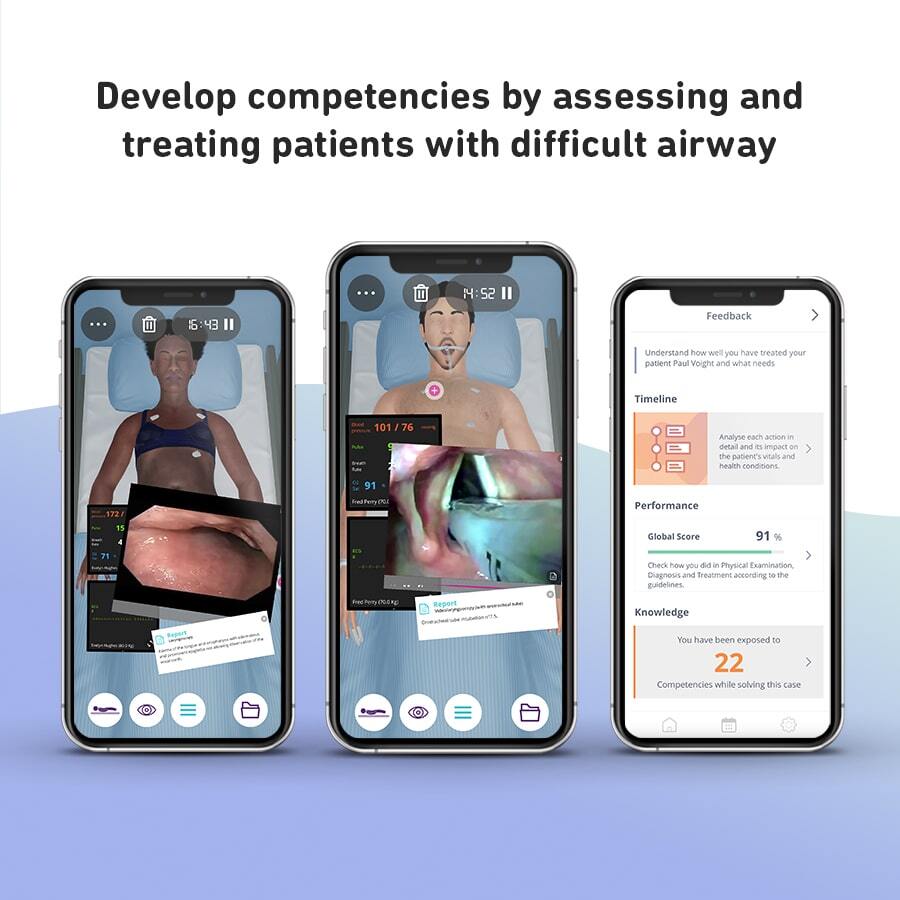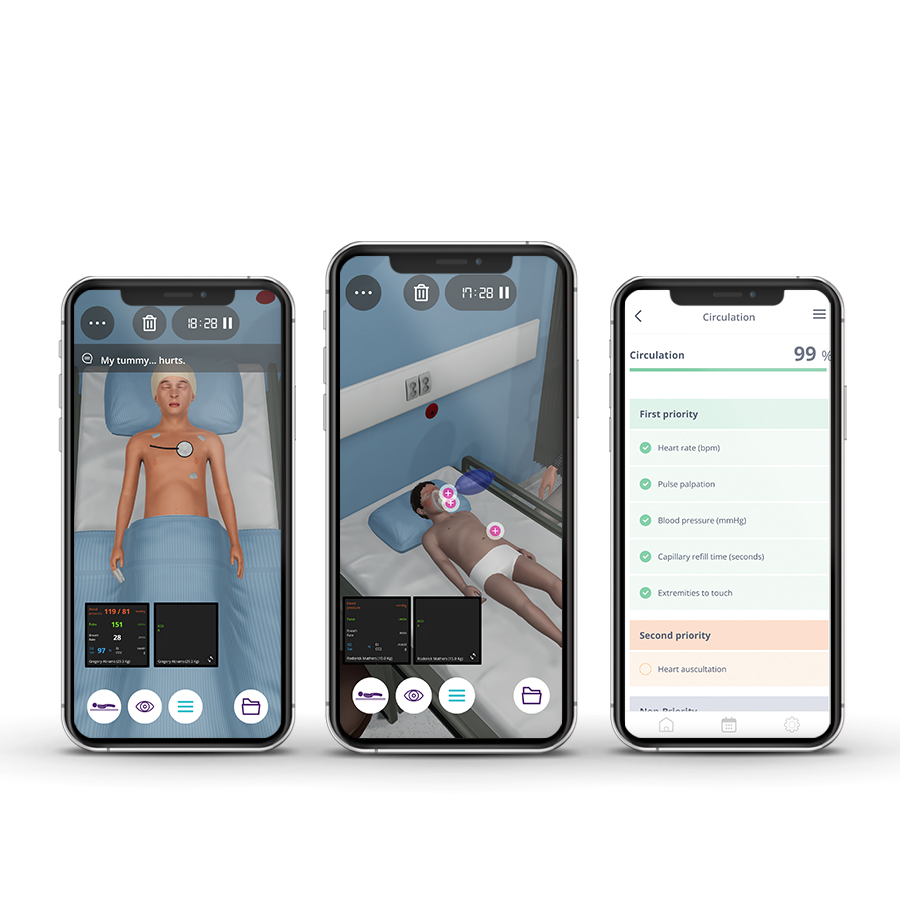Description
Course type: Online; Self-Paced
Specialty: Cardiology
Language: English / Portuguese
Resources: Handbook
Level: Intermediate
Target: Nursing
Modules: 5
Durations: 2 months
Time Effort: Up to 110 minutes per module
Certificate: Yes
Course Description
Currently, in the emergency department, there is a high incidence of patients with cardiac changes. A rapid assessment of these patients has a major impact on the prognosis of their clinical status. Within the scope of Nursing interventions and the effective application of knowledge, nurses need to have solid knowledge, based on clinical evidence on the main aspects of ECG. In this sense, to promote knowledge, it is essential to use not only initial training but also other clinical simulation strategies for professional development.
Thus, this course allows nurses to practice the approach to patients with cardiac changes in a realistic environment of an emergency department, contributing to the development of their knowledge in the area of electrophysiology.
Course Overview
- 5 Modules
• 5 virtual patient cases of an intermediate level of complexity - Average Time to practice (per module)
• Clinical Scenario: 20 minutes per attempt (3 attempts: 60 minutes)
• Final attempt (if applicable): 20 minutes
• Multiple Choice Question: 5 minutes
• Feedback Area: 10 minutes
• Learning Objectives and Scientific References: 5 minutes
• Debriefing Video: 10 minutes - Online, Self-paced
• You have up to 2 months to complete the 5 modules at your own pace. The course can be accessed through Body Interact at any time. - Certificate of Completion
• After completing the course, you will receive a Certificate of Completion that can be added to your CV or Resume.
Learning Objectives
• Identify an early repolarization pattern through the patient’s condition, dialogues, and complementary diagnostic tests (12-lead-ECG)
• Identify a myocardial infarct through the 12-lead-ECG
• Apply the correct treatment according to medical indication
• Identify atrial fibrillation in the 12-lead-ECG in a patient with heart failure through the patient’s condition, dialogues, and complementary diagnostic tests (12-lead-ECG)
• Identify atrial flutter in the 12-lead-ECG
• Apply the correct treatment according to medical indication
• Identify ventricular tachycardia with narrow complex through the 12-lead-ECG
Clinical Competencies
Safety
• Universal safety measures procedures
• Promote patient safety
• Collect patients clinical information
• Establish drug dosing for common medications
Breathing
• Respiratory rate and rhythm assessment and interpretation
• Oximetry interpretation and O2 administration
• Lung examination (percuss, fremitus, auscult and qualities of air sound, lobar locations)
Circulation
• Assess and interpret pulse and blood pressure
• Electrocardiogram interpretation
• Detect heart murmurs and sounds: Identify S1 (tricuspid, mitral) and S2 heart sounds (pulmonary, aortic)
• Catheter management
Disability
• Blood sugar measurement and interpretation
Exposure
• Assess and interpret temperature
• Hand and foot examination
• Cath lab techniques interpretation
• Laboratory Tests interpretation: Cardiac enzyme; Liver function; Renal function; Hematocrit; Fluid/Electrolyte
Module 1 – Early phase
Context: There are electrocardiographic findings that were normally considered benign. However, recent studies have shown that they can be related to the risk of ventricular arrhythmias and sudden cardiac arrest.
Virtual Scenario: Miss Sheperd was running a marathon when she suddenly felt odd and had to stop running. She is healthy and has no personal background.
Module 2 – Chest pain after a family argument
Context: Some of the cardiac changes accompanied by symptoms can contribute to the discovery of the clinical diagnosis. These symptoms may be associated with discomfort in the center or on the left side of the chest. At the level of frequency, it may last a few minutes or pass and return. It may also be felt as uncomfortable pressure, tightness, fullness, or pain.
Virtual Scenario: Ms. Taylor is divorcing her husband. She was married to him for 17 years. Today, when they were signing the divorce papers, they started an argument about the custody of their son.
Module 3 – Feeling very tired
Context: Certain cardiac arrhythmias pose a major concern since they have the potential to develop blood clots in the upper chambers of the heart. These clots can also circulate to other organs and lead to blocked blood flow (ischemia) in those same locations.
Virtual Scenario: Mr. Lee is a mechanic and works hard to pay off some bills that his wife incurred with the loss of her own business. He has a personal history of heart failure, atrial fibrillation, hypertension, and obesity.
Module 4 – Feel palpitations and general malaise
Context: A normal heartbeat begins with an electrical impulse in the sinus node, a small area in the right atrium of the heart. Certain rhythm changes produce auricular reentry that allows the electrical impulse to move rapidly around the right atrium, causing between 240 and 340 contractions per minute. The rapid contractions prevent the chambers from filling completely between beats.
Virtual Scenario: Mr. Price was talking with his neighbor about some roof problems when he began to feel palpitations and general malaise. His neighbor decided to call for an ambulance.
Module 5 – Chest discomfort at the gym
Context: Disturbances in heart rhythm, caused by abnormal electrical signals in the ventricles, prevent the atria from filling with blood properly. This behavior can result in an inability of the atria to contract effectively and can cause cardiac arrest.
Virtual Scenario: Miss Wayman was at the gym when suddenly felt her heart racing more than usual and chest discomfort. She has no relevant personal background and is healthy and fit.
Authors
With a multidisciplinary group of international clinical reviewers, Body Interact ensures a high standard of accuracy, diversity, and impact of its course.
Body Interact has developed this course based on European Society of Cardiology (ESC), utilizing advanced medical simulation technology with virtual patients
Scientific References
- Bernath P, Kusumoto F. ECG interpretation for everyone. 1st ed. Wiley-Blackwell; 2012.
- Borja I, et al. ESC Guidelines for the management of acute myocardial infarction in patients presenting with ST-segment elevation: The Task Force for the management of acute myocardial infarction in patients presenting with ST-segment elevation of the European Society of Cardiology (ESC). European Heart Journal. 2018; 39 (2): 119–177.
- Brady W, Hudson K, et al. The ECG in Prehospital Emergency Care. Wiley-Blackwell; 2013.
- Hindricks G, et al. 2020 ESC Guidelines for the diagnosis and management of atrial fibrillation developed in collaboration with the European Association for Cardio-Thoracic Surgery (EACTS): The Task Force for the diagnosis and management of atrial fibrillation of the European Society of Cardiology (ESC) Developed with the special contribution of the European Heart Rhythm Association (EHRA) of the ESC. European Heart Journal. 2021; 42 (5): 373–498.
- Metkus T. ECG Rounds. McGrawHill; 2014.
- Patton Kristen K., Ellinor Patrick T., Ezekowitz Michael, et al. Electrocardiographic Early Repolarization. Circulation. 2016;133(15):1520-1529
- Priori SG, Blomström-Lundqvist C, Mazzanti A, et al. 2015 ESC Guidelines for the management of patients with ventricular arrhythmias and the prevention of sudden cardiac death: The Task Force for the Management of Patients with Ventricular Arrhythmias and the Prevention of Sudden Cardiac Death of the European Society of Cardiology (ESC)Endorsed by: Association for European Paediatric and Congenital Cardiology (AEPC). Eur Heart J. 2015;36(41):2793-2867.

